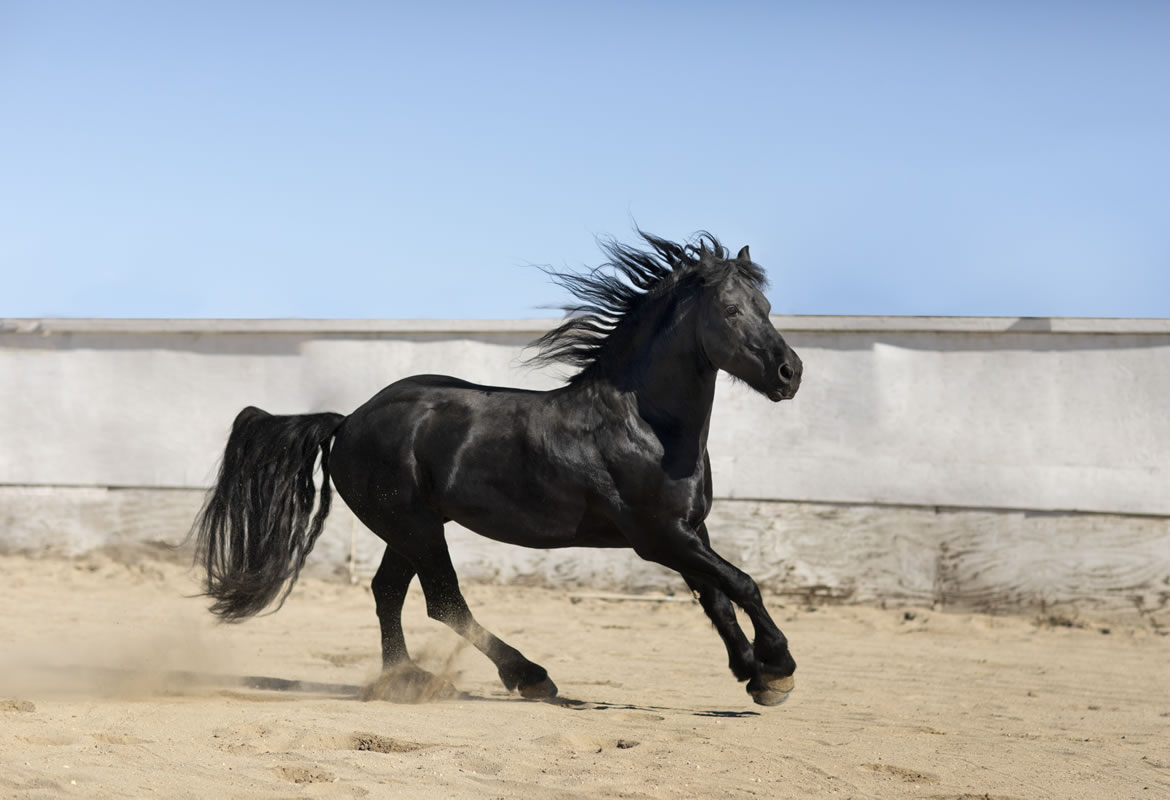As the name chosen to refer to the breed suggests, the Friesian horse originates from the Dutch province of Friesland. It ranks among the oldest horse breeds in Europe, with the earliest evidence coming directly from Roman times. In the past, the Friesian horse worked mainly in the fields, exploited for its strength and particular resistance to exertion. Today, it can be found in several important breeding farms, which manage to take care of such an important and powerful breed in the right way.
The Friesian has no trouble running or pulling anything, so much so that it was chosen as the official breed for pulling the royal family’s carriage in the Netherlands. We are therefore talking about a high-performance animal that is worth considering for your own breeding.
Friesian Horse Characteristics
But how is the Friesian horse distinguished? What differentiates it from all other breeds?
The brown coat is the first identifying element of the Friesian horse, along with high standards of height and weight. The horse must be between 150 and 170 cm in height and weigh between 450 and 600 kg.Within the Friesian breed, three micro-families of horses can be distinguished: baroque, classic and modern. The baroque is sturdier and stronger; the classic is more slender and suited to racing; the modern is lighter than the other two and more suited to mass breeding. A common characteristic of all three families is the harmony of the body, which remains elegant and perfectly balanced.
The beautiful, thick, wavy mane completes the face of the Friesian horse, which has two large, expressive eyes and small, slightly inclined ears. In contrast, the animal’s neck is long and slightly curved, with broad, strong shoulders and sturdy legs.

Some advice for breeders
The Friesian horse is certainly a splendid specimen, with a strong body and a determined character. Foals tend to be particularly cheerful and quite willing, ready to learn and comply with the breeder’s instructions. We advise not to insist too much in the training phase, but to let the horse have a minimum of autonomy in decision-making. The Friesians are independent by nature and need their space to be respected.
We conclude with one last piece of useful advice for all farmers, which concerns the purchase of a handy foaling alarm device. If your goal is to ‘expand the family’, you cannot do without such a useful tool. Our device C6 EVO IOT was specially developed to help breeders manage calving under the best possible conditions. Attached directly to the mare, the C6 alerts you when the first contractions arrive, giving you time to call the vet and assist the mare from the very first moment.
Do not underestimate the purchase of such a device, which can completely revolutionise your breeding strategy.











